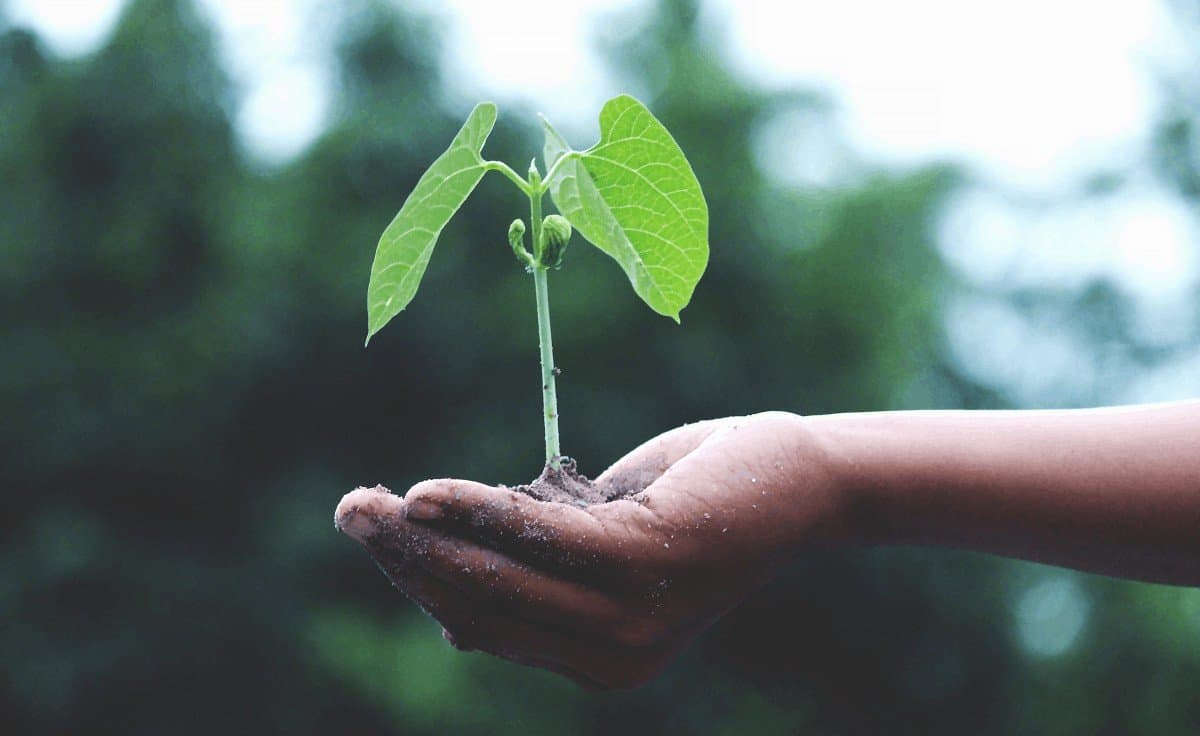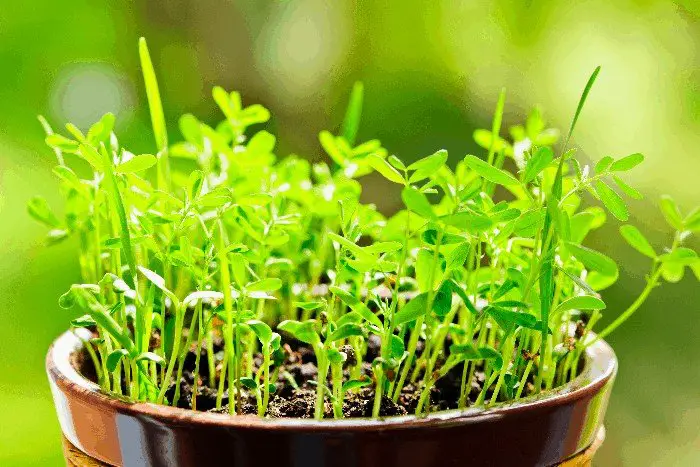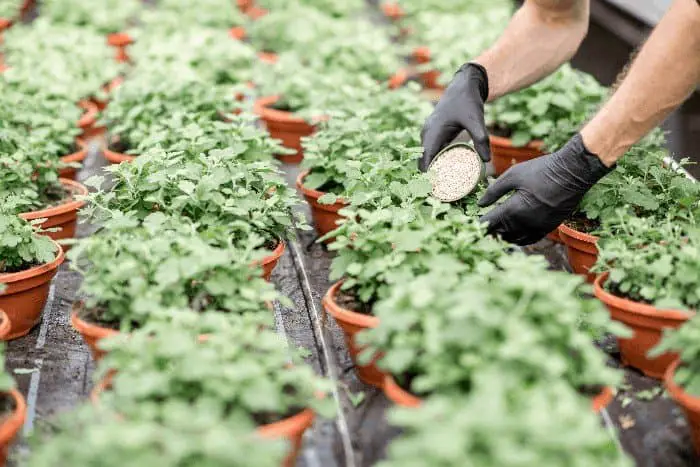Last Updated on January 19, 2021 by Tony Manhart
Fixing your first set of true leaves from turning yellow can be a difficult task especially if you don’t have much gardening experience. You don’t have to worry anymore; we are here to help you.
It is a common sight to suddenly find your plant leaves appear yellowish in color. While this may be completely new to new gardeners, the more experienced growers know that it may or may not be a problem. So how then do you stop your leaves from turning yellow? In this article, we will be examining some of the reasons why your seedling leaves are turning yellow and what you can do about it.
Seedling Leaves Turning Yellow
If you notice that the first sets of true leaves of your seedlings are turning yellow, the first thing you should do is determine which of the seedlings are turning yellow. If you notice that the leaves that are undergoing coloration are those of the cotyledons, then you shouldn’t worry much. Your plants are in perfect health.
When seedlings begin to sprout, the first sets of leaves to be developed are those of the cotyledons. These cotyledons help the plant to begin proper development and will normally bleach out and die once the plants start producing mature leaves.
Why Your Plant Seedlings Are Turning Yellow
If you notice that the leaves that are bleaching out are the larger, more mature leaves, then you’ve got yourself a problem. In most cases, your plants appear yellowish due to a deficiency factor. This means that your plant is lacking in one or more of the elements that it needs for healthy growth and development. Some of the main reasons why your plant leaves are turning yellow are because
· Lacks Enough Light
Your plants will begin to appear yellow if it doesn’t get enough light. If you grow your plants indoors, you need to ensure that they get the right intensity and amount of light. For indoor plants, you will need to make use of a grow light that is placed directly over your plant.
You should also ensure that this grows light is kept on for at least 12 hours every day. You also want to keep the plants in the dark for another 12 hours daily. This is because too much light can also result in the yellowing of leaves. A grow light with an automatic timer is a good investment as it saves you the stress of turning the light on/off as with manual lighting.
· Not Enough Water
Plants also need enough water to grow and develop healthy roots and leaves. Your leaves will also appear yellow if they are thirsty. This is why you have to ensure that they are watered timely. Have a roster for water application. You don’t have to water your plants every day. You only need to water your plants when they need it. This is usually when the soil is dry and lacks moisture.
· Too Much Water
Too much water in the plant-soil can also lead to yellow leaves. This is what is referred to as overwatering. This usually occurs due to heavy downpours or when you leave the sprinkler on for too long. The common signs of an overwatered plant are
– The plant doesn’t experience new growth
– Young leaves appear brownish
– The soil appears greenish due to the growth of algae
– Plants begin to wilt
– Stunted or rotten roots
– Lower leaves appear yellow
Your plant needs to breathe regularly and too much water only leads to drowning. When the roots of your plants are constantly flooded, it becomes difficult for it to take in the required gases. This could be the reason why your first set of true leaves are turning yellow.
· Fertilizer Application
Another reason why your plant leaves are turning yellow is because of too much fertilizer application. Seedlings don’t need fertilizers in this stage of their lives. So if you’ve been applying fertilizers to your new plants, which could be the reason why the first set of true leaves are turning yellow.
The minerals contained in fertilizers can result in the death of your seedlings, which is why you want to desist from fertilizer application until later. One of the signs of too much fertilizer application is that you begin to notice white deposits around the holes for drainage. You can remedy the situation by preventing further fertilizer application and flushing the plant slowly with water.
How to Fix First Set of True Leaves from Turning Yellow
Now that you know some of the reasons why your plant leaves are turning yellow, we can now discuss how to remedy the situation. You can read all about how to fix the first set of true leaves from turning yellow below
- Ensure that you make use of soil with the right minerals to support healthy growth and development of your seeds. This will prevent the need for fertilizer application which your plant can do without in the early stage of its life.
- Water your plants regularly and avoid overwatering. As explained earlier, this is one of the major reasons why plant leaves turn yellow.
- You also want to provide your plant with the right amount of light it needs to grow healthy. For indoor plants, ensure you provide a light source to keep them healthy.
- Avoid fertilizer application during the early stage of planting. Even if you must, do so in minute quantity and check for signs of too much fertilizer application.
- You can also fix the first sets of true leaves from turning yellow by checking that your plant is free from any form of the disease. Mold and fungus can also lead to diseases in your plants. So you want to keep them out of your garden.
- Lastly, take preventive measures to keep pests away from your garden.
Conclusion
You can fix the first sets of true leaves from turning yellow by applying the preventive measures above. If you take proper care of your plants and garden, chances are that you won’t encounter any form of discoloration whatsoever.
How do you deal with yellow leaves in your garden? We will like to hear from you.
FAQ’s
How do you fix Overwatered seedlings?
When you notice you have been overwatering too much, you will need to salvage the plant by not watering much. You will need to do a few things to save the plant. They include:
- Stop watering your plant immediately and improve the drainage.
- When you water again increase water intervals
- Identify any root rot and treat it immediately
- Consider changing both the pot and the soil.
- Use a pot that has a hole in the lower part. You can also place a jute bag under the pot to absorb excess moisture. This promotes better drainage and faster soil drying. Provide increased temperatures and ventilation, and lower humidity.
- Place your plant in a well-ventilated place
- Water the plant in the morning instead of the evening after resuming watering
- Provide the plant with extra direct sunlight
How often should you water your seedlings?
Seedlings should always be kept moist but not wet. They should never be allowed to dry out completely. It is important to water your seedlings at least once per day. A spray bottle is a good way to water your seedlings. The spray bottle keeps the soil moist without getting it too wet.
In times of transplanting the seedlings, be sure to water your garden before planting. This will ensure that your seedlings have moist ground to be planted on. Seedlings need a growing medium that’s constantly moist. They can’t survive a long time without water.
Why are my seedlings leggy?
Leggy seedlings are those that have grown too close together. These seedlings do not get enough light because they shade each other. This makes them grow taller as they compete for light and end up getting leggy.
You can fix this by thinning out your seedlings immediately when the first true leaves appear. This will allow them to grow without getting crowded. Provide enough sunshine for the plant to stabilize. If you have a window, keep them near it. If you don’t have a window, get a glowing light to provide enough light to your plants.
Why are my seedlings growing slow?
There are several reasons why your seedlings grow slowly. Here are some of them and a solution on how to fix it.
- Cold room temperature. Seeding growth can grow slowly if the room is too cold. If the temperature is below 65 degrees Fahrenheit, then try keeping seedlings warm with a room heater or a heat mat.
- Lack of enough light. Inadequate lighting is another thinking that slows the seeding growth. It’s best to keep your plants near a window that receives a good amount of sunlight. Or get some glow lights to give them adequate light.
- Lack of nutrients. Good nutrition is important for growing seedlings. When they grow, their first true leaves start feeding them with organic fertilizer. This will help them grow fast enough.
- Inadequate watering. Over or under-watering can cause seedlings to grow much slower. Keeping the soil moist evenly at all times is important for seed growth. Get a moisture content gauge that will check your soil regularly to know when to water.
Why are my seedling leaves curling or drooping and how to fix it?
Droopy seedlings with curling leaves are indications that something is very wrong. Spider mites, under watering, and fertilizer burn are 3 main culprits. These 3 kill the seedling fast.
If you notice your leaves curling, do the following:
- Give them enough water
- Use neem oil or insecticidal soap to eliminate spider mites
- Use organic fertilizers instead of chemical ones.
Tony Manhart is a passionate gardener who has been tending to gardens for over 20 years. He takes pride in creating beautiful outdoor spaces with plants, trees, and shrubs that can thrive in any environment. He loves to share his knowledge with others and has taught classes on gardening basics and advanced techniques. He is committed to sustainability, using natural and organic methods to create and maintain gardens. He also works with local organizations to create green spaces for communities. When he’s not gardening, Tony enjoys hiking, reading, and spending time with his family.




